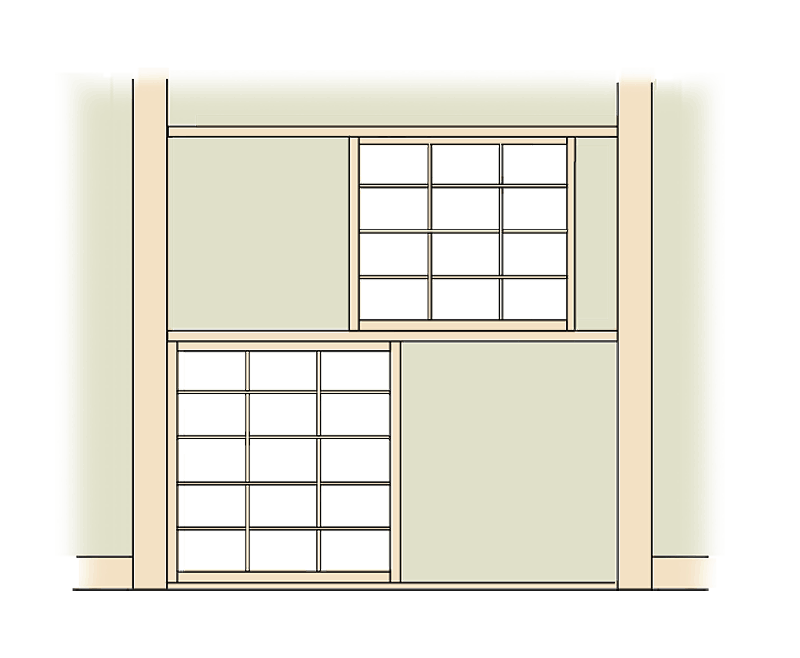|
||
 |
||

(C)2001 Japanese Architecture and Art Net Users System. No reproduction or republication without written permission.
掲載のテキスト・写真・イラストなど、全てのコンテンツの無断複製・転載を禁じます。
|
||||||
| shikishimado 色紙窓 | ||||||
| KEY WORD : architecture / tea houses | ||||||
| Lit. poetry paper windows. *Shikishi 色紙 refers to the square paper on which short poems waka 和歌 or haiku 俳句 are written. In tea architecture, two square windows that are covered with *shouji 障子 paper and placed one above the other. Since the center vertical wooden strips of these small shouji rarely line up and are staggered, they often appear to be on the diagonal is achieved. Because many windows in tea ceremony house sometimes look as if they were scattered around the wall like pasted of poetry papers this type of window was named "poetry paper windows". Usually, the shikishimado is beside the host's mat, temaeseki 点前席, but occasionally it is found beside the alcove *tokonoma 床の間. The upper window is made with vertical slats or thin bamboo poles *renjimado 連子窓, and the lower window is made of ditch reed and bamboo lattice *shitajimado 下地窓. But there are examples of windows having both upper and lower sections in shitajimado. A single sliding shouji is hung on the inside of each window. The creation of the shikishimado is attributed to Furuta Oribe 古田織部 (1554-1615) and Kobori Enshuu 小堀遠州 (1579-1647). The most representative shikishimado is in the Manshu-in Hassouseki 曼殊院八窓席, Kyoto. | ||||||
 |
||||||
| REFERENCES: | ||||||
| EXTERNAL LINKS: | ||||||
| NOTES: | ||||||
(C)2001 Japanese Architecture and Art Net Users System. No reproduction or republication without written permission. 掲載のテキスト・写真・イラストなど、全てのコンテンツの無断複製・転載を禁じます。 |
||||||